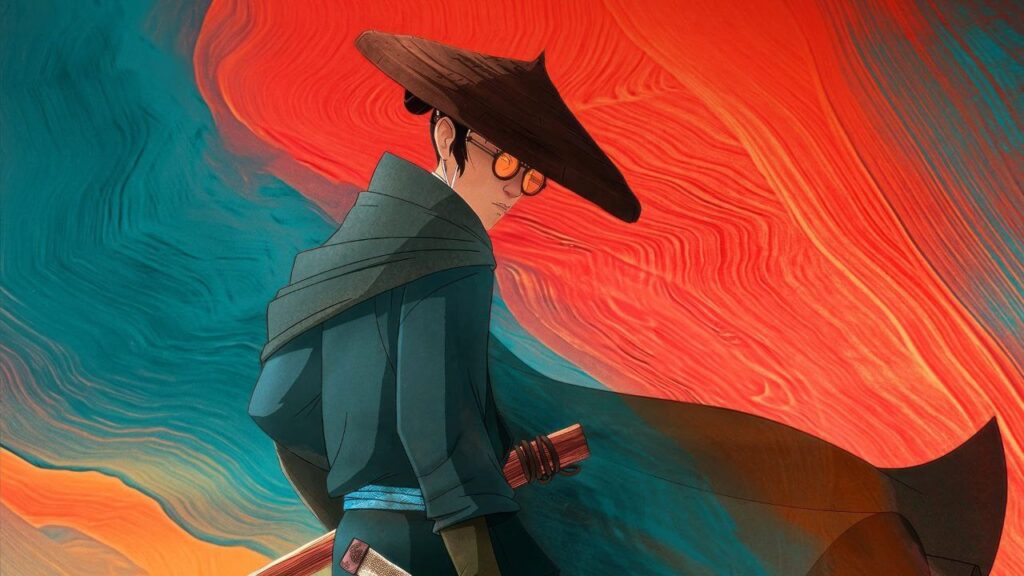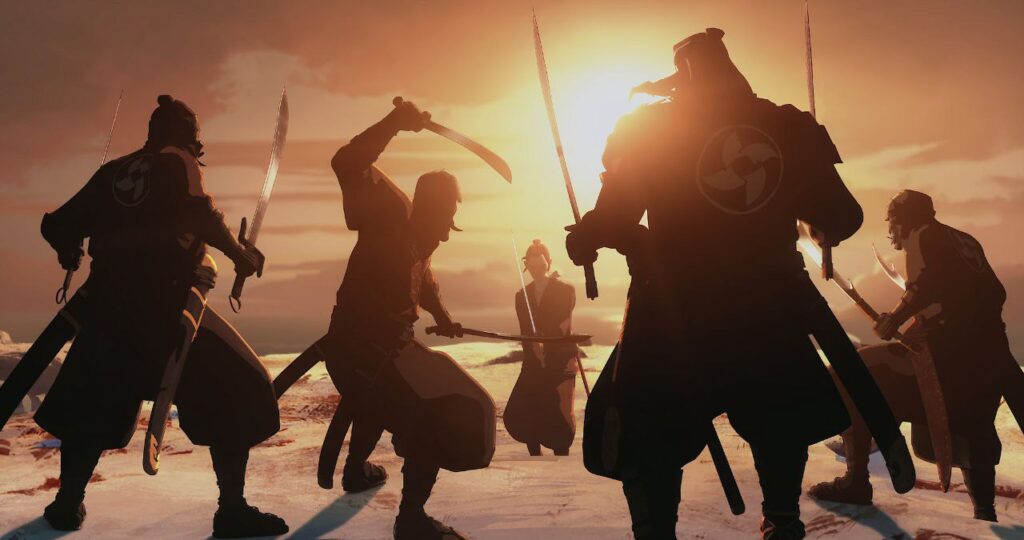
Introduction:
“Blue Eye Samurai,” the critically acclaimed animated series from creators Michael Green and Amber Noizumi, has carved its place as a captivating story within the vast landscape of samurai narratives. Weaving together themes of revenge, societal expectations, and the struggle for identity, it delivers an impactful narrative with stunning visuals and masterful swordsmanship.
A Swordswoman on the Path of Vengeance:
The story revolves around Yukio, a young woman with piercing blue eyes, ostracized from society due to her foreign heritage. Driven by a burning desire for revenge against those who wronged her family, she embraces the life of a Ronin, a masterless samurai, honing her swordsmanship in the shadows. As Yukio embarks on this path, she grapples with internal conflicts: the cost of vengeance on her soul, the challenges of navigating a rigidly hierarchical society, and the struggle to define herself beyond her trauma.
More Than Just Action:
While stunning fight sequences are a highlight, “Blue Eye Samurai” delves deeper than mere action spectacle. It explores the social injustices faced by women and outcasts in Edo-period Japan. Yukio’s blue eyes symbolize her difference, making her an object of fear and prejudice. Despite her exceptional skills, she constantly faces discrimination and must prove herself worthy in a world dominated by men.
Character Complexity:
The series boasts a diverse cast of characters, each with their own motivations and complexities. Ginji, a charming thief with a hidden past, forms an unlikely bond with Yukio, challenging her rigid code and offering emotional support. The stoic warrior Kyotaro serves as Yukio’s mentor, pushing her to her limits while wrestling with his own demons. Each character evolves throughout the story, facing their own trials and contributing to the narrative’s richness.

Visually Striking:
The animation in “Blue Eye Samurai” is breathtaking. The blend of traditional 2D animation with CG elements creates a visually stunning world that transports viewers to Edo-period Japan. The fight choreography is exceptional, showcasing Yukio’s skill and grace with the katana. The diverse environments range from bustling street markets to serene cherry blossom landscapes, further immersing the audience in the narrative.
Beyond the Blade:
The series doesn’t shy away from the brutal realities of violence and revenge. It depicts the emotional and physical toll it takes on Yukio, highlighting the devastating consequences of seeking retribution. As she progresses on her path, she questions the true meaning of justice and its impact on her humanity.

More Than Just Another Samurai Story:
“Blue Eye Samurai” distinguishes itself from other samurai tales by incorporating diverse influences. The narrative’s Western creators combine their unique perspective with Japanese history and folklore, resulting in a fresh take on the samurai genre. The series also incorporates subtle social commentary, prompting viewers to reflect on contemporary issues like prejudice and societal expectations.
A Renewed Journey:
With its season two renewal confirmed, “Blue Eye Samurai” promises further exploration of Yukio’s journey. Audiences can anticipate deeper insights into the characters’ backstories, more captivating sword battles, and a possible evolution of Yukio’s understanding of revenge and her place in the world.

FAQ:
Q1.What is Blue Eye Samurai?
Blue Eye Samurai is an animated series set in Edo-period Japan following Yukio, a young woman with blue eyes seeking revenge against those who wronged her family. Combining action, drama, and social commentary, it explores themes of vengeance, identity, and societal challenges.
Q2.What makes Blue Eye Samurai unique?
Several aspects set it apart:
- Female protagonist: Yukio is a refreshing lead in a male-dominated genre, facing discrimination due to her gender and heritage.
- Complex themes: The story delves beyond action, exploring personal conflicts, social injustices, and the true cost of revenge.
- Diverse characters: Each character has their own motivations and struggles, adding depth and realism to the narrative.
- Stunning visuals: The blend of traditional and CG animation creates a visually captivating world.
- Western influences: Creators Michael Green and Amber Noizumi offer a unique perspective on Japanese history and folklore.
Q3.Is Blue Eye Samurai for me?
If you enjoy:
- Samurai action and swordsmanship
- Complex characters and thought-provoking narratives
- Stories exploring societal issues and identity
- Visually stunning animation with rich world-building
Then Blue Eye Samurai might be right for you!
Q4.Where can I watch Blue Eye Samurai?
The series is currently available on [Platform where the show is available].
Q5.Will there be a season 2?
Yes! Season 2 has been confirmed and is coming soon.
Q6.Who voices the characters?
- Maya Erskine as Yukio
- Masi Oka as Ginji
- Darren Barnet as Kyotaro
- Brenda Song as Princess Akemi
- And many more!
Q7.Who is the target audience?
While exciting action sequences might appeal to younger viewers, the complex themes and nuanced characters make it suitable for mature audiences as well.
Q8.What are some critical reviews of Blue Eye Samurai?
Reviews have been generally positive, praising the visuals, characters, and story themes. Some critique the pacing and occasional predictability.
Q9.Is there anything else I should know?
The series features violence and mature themes, so viewer discretion is advised.